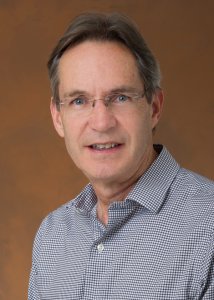Presented By: Michigan Institute for Plasma Science and Engineering (MIPSE)
MIPSE Seminar | Ion Propulsion and the Job-Creating Power of the Rocket Equation
Dr. John Brophy, NASA Jet Propulsion Laboratory

Solar electric propulsion (EP) is firmly in the main-stream of propulsion technologies for deep space missions. To go faster and farther, deep space mis-sions of the future will require increasingly larger total changes in the spacecraft velocity – ΔV. The largest ΔV provided by any onboard propulsion system in deep space is 11 km/s by the ion propulsion system on NASA’s Dawn mission. This is 3 to 4 times higher than the ΔV by any onboard chemical propulsion system. Solar EP has now been used on six missions beyond Earth orbit: Deep Space 1, SMART-1, Hayabusa 1, LISA Pathfinder, Hayabusa 2, and Dawn; and on hundreds of commercial communication satellites. The next uses of EP will be NASA’s mission to the metal world (16) Psyche and ESA’s BebiColombo mission to Mercury. This activity is driven by the inescapable reality of the rocket equation. Yet EP has just scratched the surface of what it can do. This talk will discuss how advanced EP technologies will impact an impressive range of future space activities including: rapid transportation throughout the solar system; human missions beyond low-Earth orbit; planetary defense; asteroid mining; gravitational wave experiments; and even interstellar precursor missions.
John Brophy received a B.S. in Mechanical Engr. from the Illinois Institute of Technology in 1978, and M.S. Ph.D in Mechanical Engineering from Colorado State University in 1980 and 1984. In 1991 he led the U.S. team in the evaluation of Hall thruster technology in the Soviet Union leading to the wide-spread adoption of this technology in the West. In 1992 he initiated the NSTAR Project that successfully demonstrated of ion propulsion on Deep Space 1. He was responsible for the delivery of the Ion Propulsion System for NASA’s Dawn mission launched in 2007, resulting in the first-ever use of ion propulsion on a deep-space science mission. In 2011 he co-led the Asteroid Retrieval Mission study at Caltech’s Keck Institute for Space Studies that resulted in NASA’s Asteroid Redirect Robotic Mission. He is a JPL and an AIAA Fellow. He received the Ernst Stuhlinger Medal for Outstanding Achievement in Electric Propulsion in 2015 and the AIAA Wyld Propulsion Award in 2017.
The seminar will be web-simulcast. To view the simulcast, please follow this link: https://mipse.my.webex.com/mipse.my/j.php?MTID=m5180f2510ed6c8bf089ed215993a6f2c.
Password: MIPSE
Meeting number/Access code: 629 222 215.
John Brophy received a B.S. in Mechanical Engr. from the Illinois Institute of Technology in 1978, and M.S. Ph.D in Mechanical Engineering from Colorado State University in 1980 and 1984. In 1991 he led the U.S. team in the evaluation of Hall thruster technology in the Soviet Union leading to the wide-spread adoption of this technology in the West. In 1992 he initiated the NSTAR Project that successfully demonstrated of ion propulsion on Deep Space 1. He was responsible for the delivery of the Ion Propulsion System for NASA’s Dawn mission launched in 2007, resulting in the first-ever use of ion propulsion on a deep-space science mission. In 2011 he co-led the Asteroid Retrieval Mission study at Caltech’s Keck Institute for Space Studies that resulted in NASA’s Asteroid Redirect Robotic Mission. He is a JPL and an AIAA Fellow. He received the Ernst Stuhlinger Medal for Outstanding Achievement in Electric Propulsion in 2015 and the AIAA Wyld Propulsion Award in 2017.
The seminar will be web-simulcast. To view the simulcast, please follow this link: https://mipse.my.webex.com/mipse.my/j.php?MTID=m5180f2510ed6c8bf089ed215993a6f2c.
Password: MIPSE
Meeting number/Access code: 629 222 215.